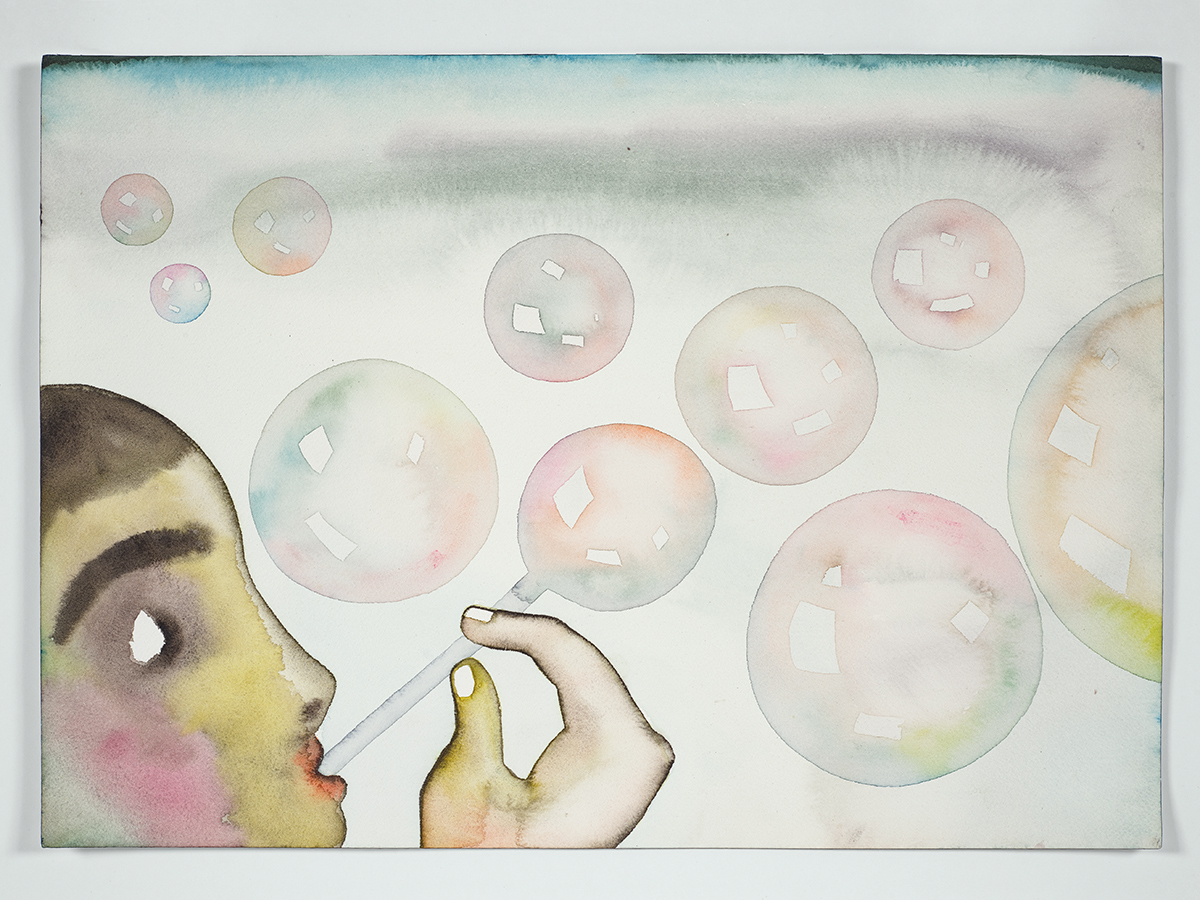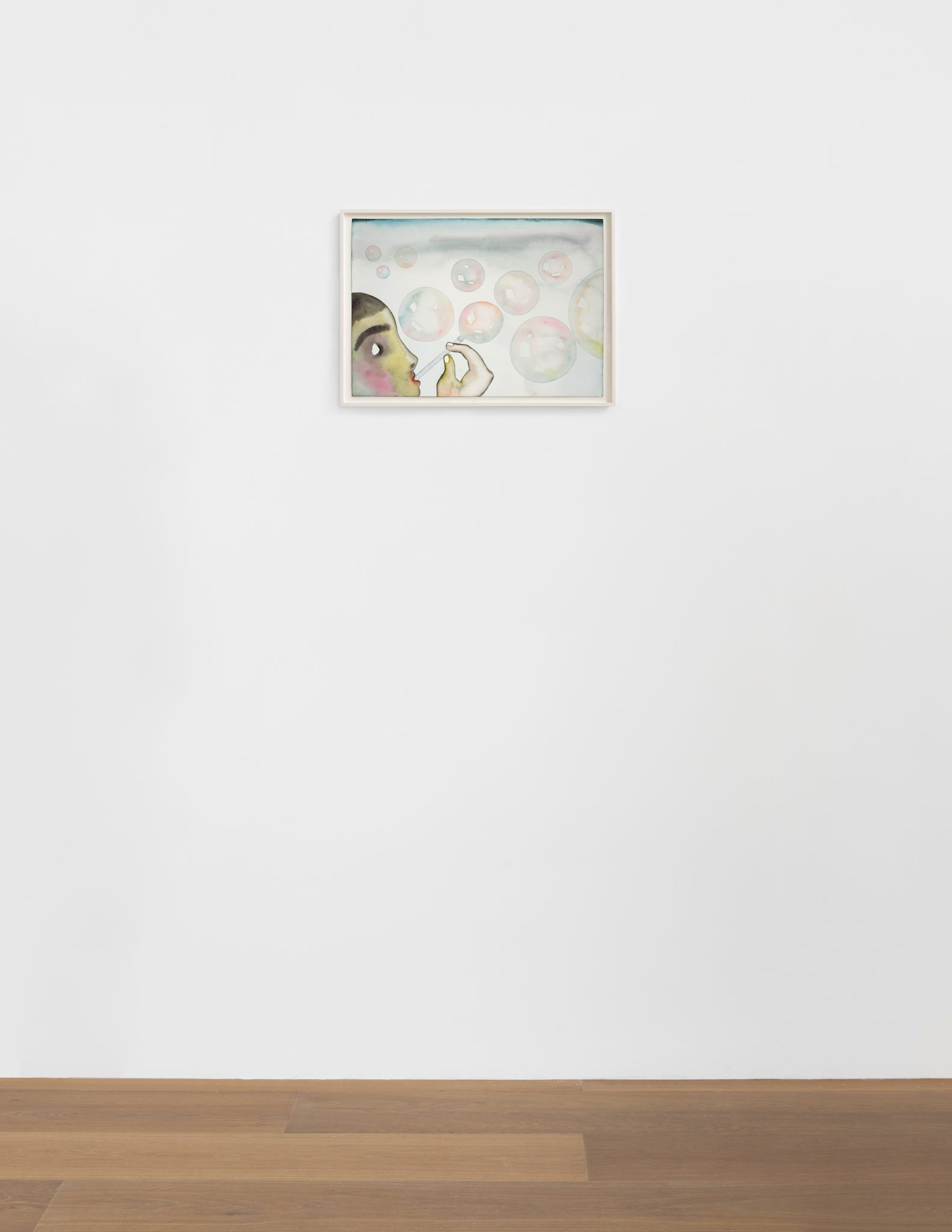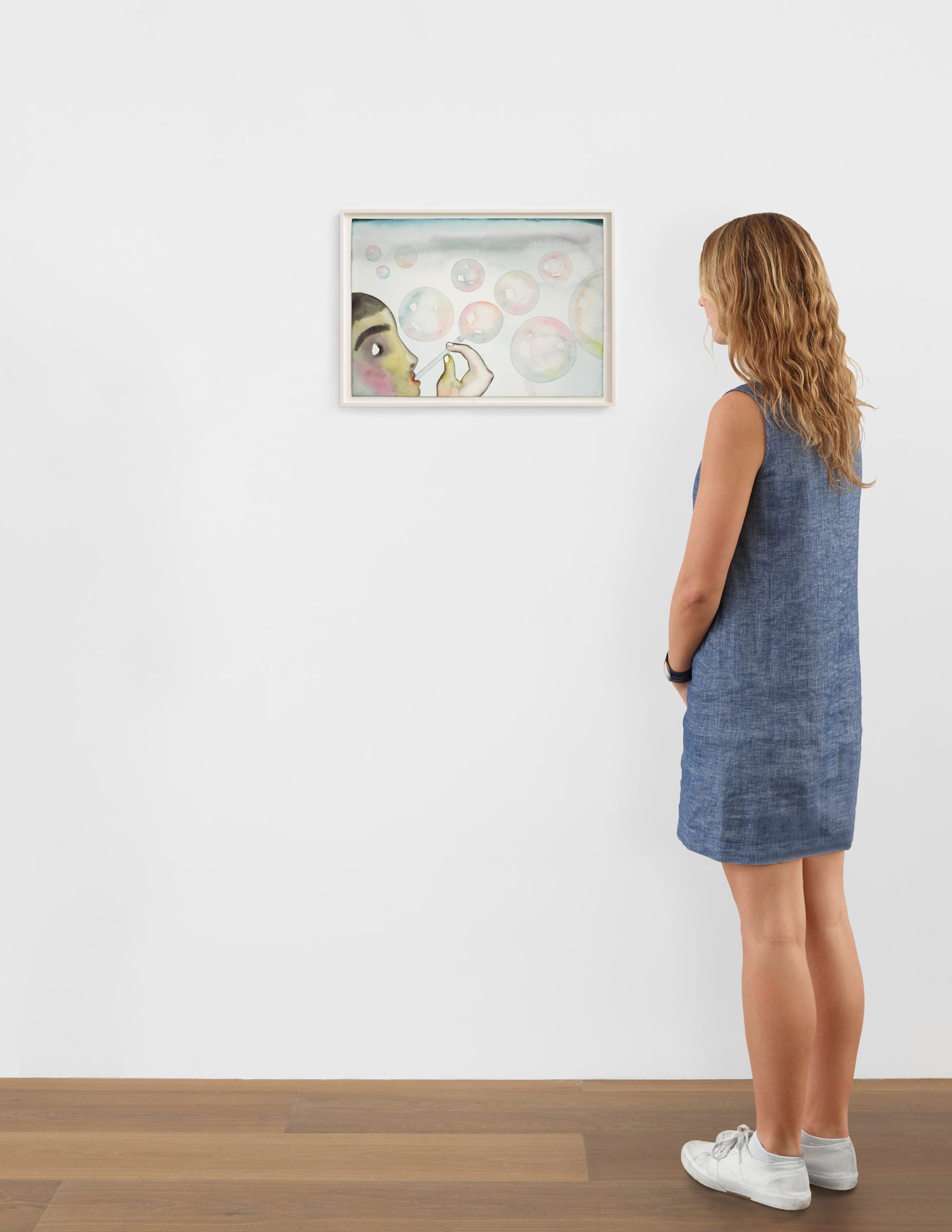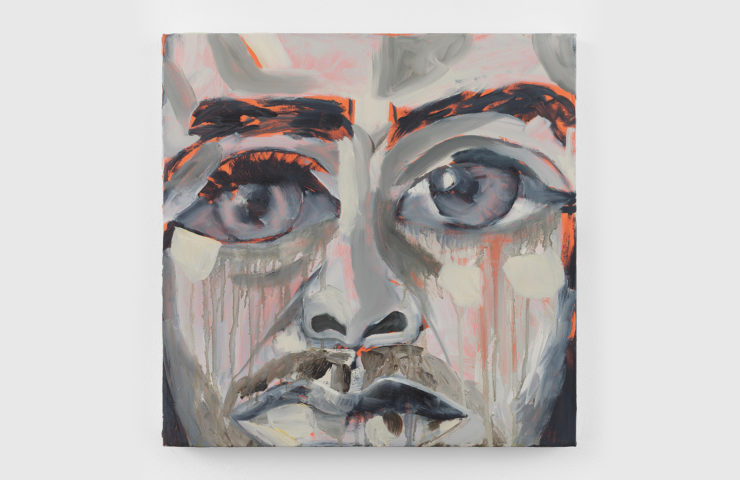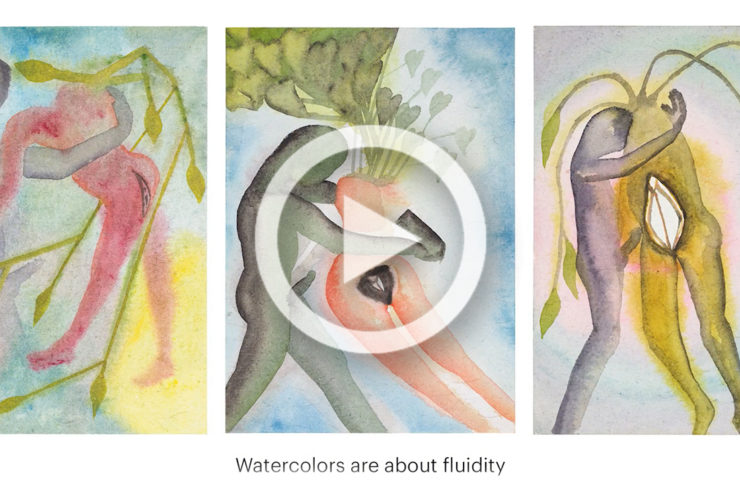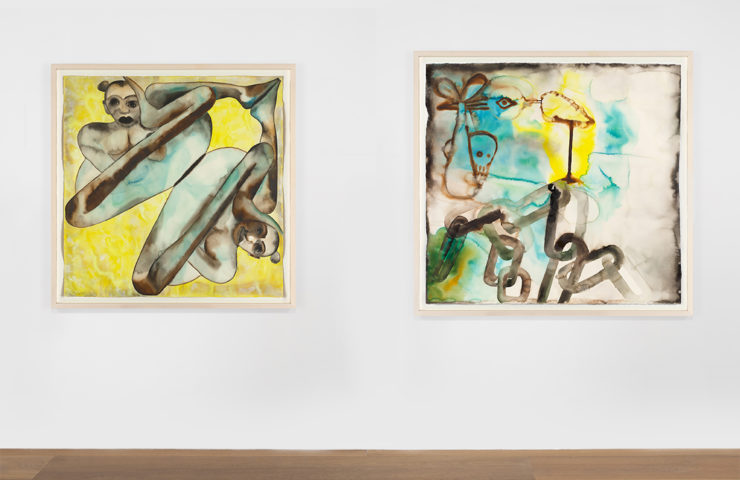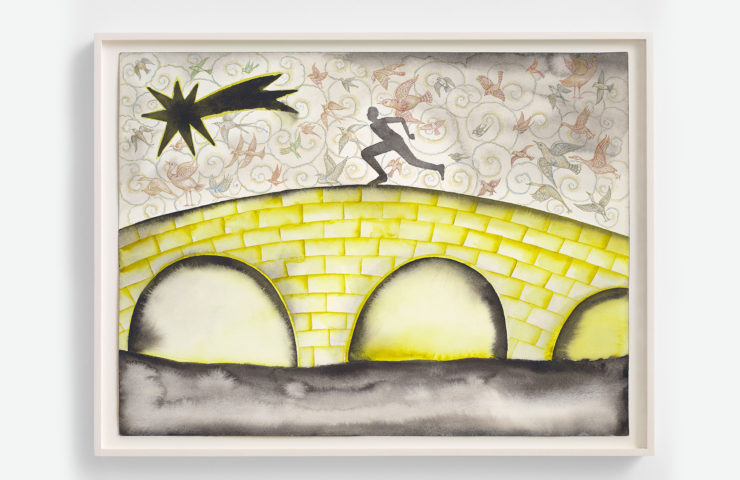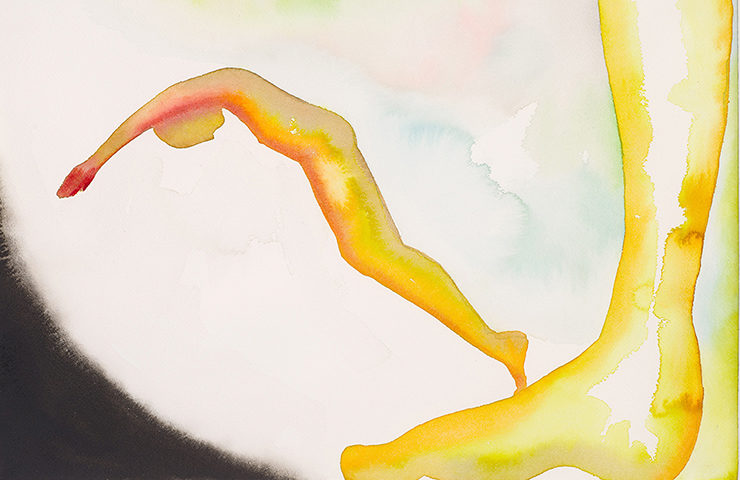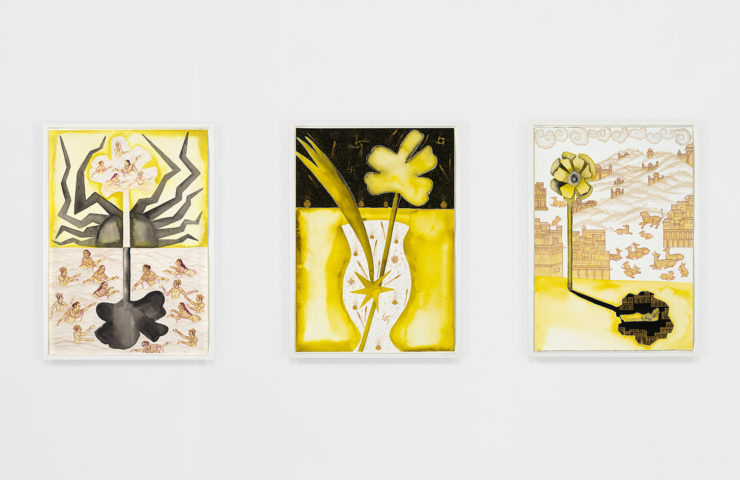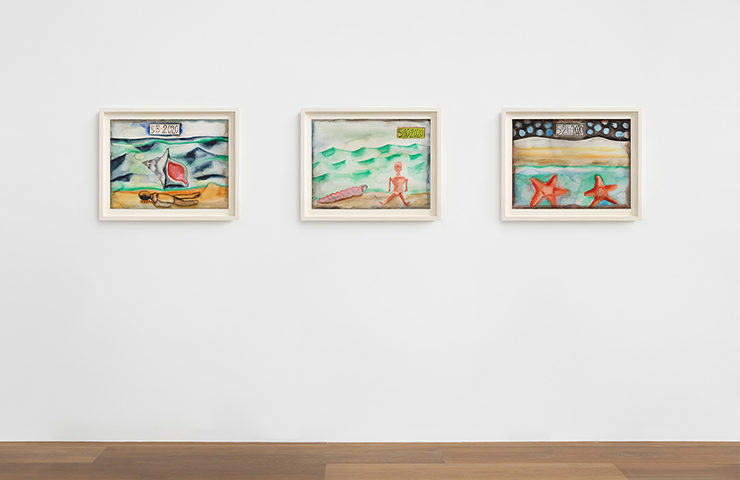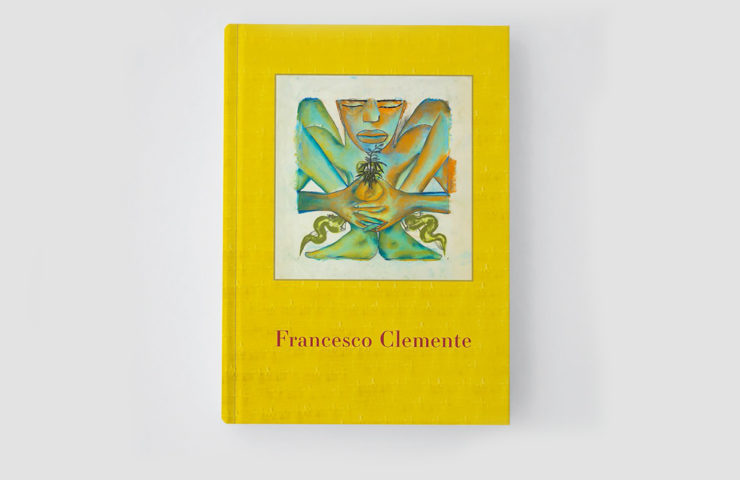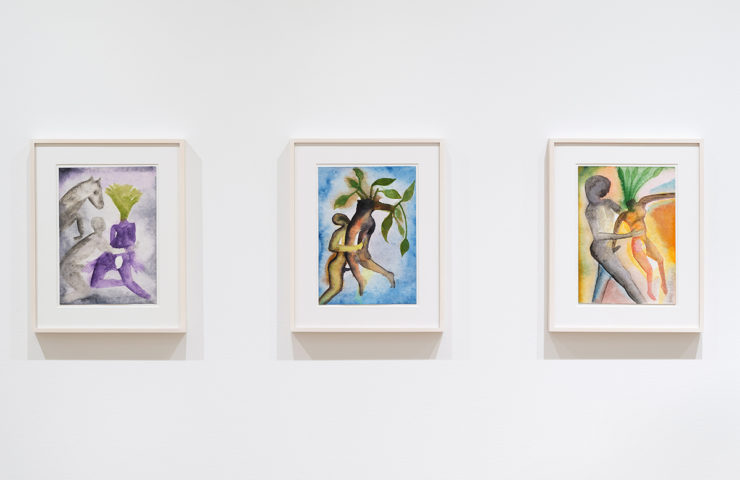Vanitas (2010)
Quod, ut dicitur, si est homo bulla, eo magis senex
(If, as they say, man is a bubble, all the more so is an old man).
—Varro
Depicting a youthful figure in the lower left corner who blows delicately rendered bubbles throughout the composition, Vanitas (2010) offers Clemente’s unique take on an established, symbolically loaded subject. Vanitas, or vanity, is a theme of Western art that presents symbols of the temporary conditions of earthly life. Fragile and evanescent, the bubble has long been considered to be a metaphor for the brevity of life—a symbol that can be traced back to the aphorism by the 1st century BCE Roman scholar Varro, quoted above. As Erasmus commented: “There is nothing so fragile, so fleeting and so empty as the life of man. A bubble is that round swollen empty thing which we watch in water as it grows and vanishes in a moment of time.” A youth blowing a bubble was a common subject established in Baroque and Rococo painting, with notable examples by Rembrandt, Jean Siméon Chardin, and Édouard Manet. Extending this theme in Vanitas, Clemente paints the bubbles in subtle colors with a sense of luminous refraction, linking them to the rounded forms and chromatic washes that comprise the figure’s face and hand. Their visual similarity connects the forms of the bubble with the head of the young figure, a reminder of the fleeting nature of youth.
Francesco Clemente
Vanitas
2010
Watercolor on paper
14 x 20 inches (35.6 x 50.8 cm)
Courtesy of Francesco Clemente Studio; Collection of the Artist, New York
Photo: Tom Powel Imaging

